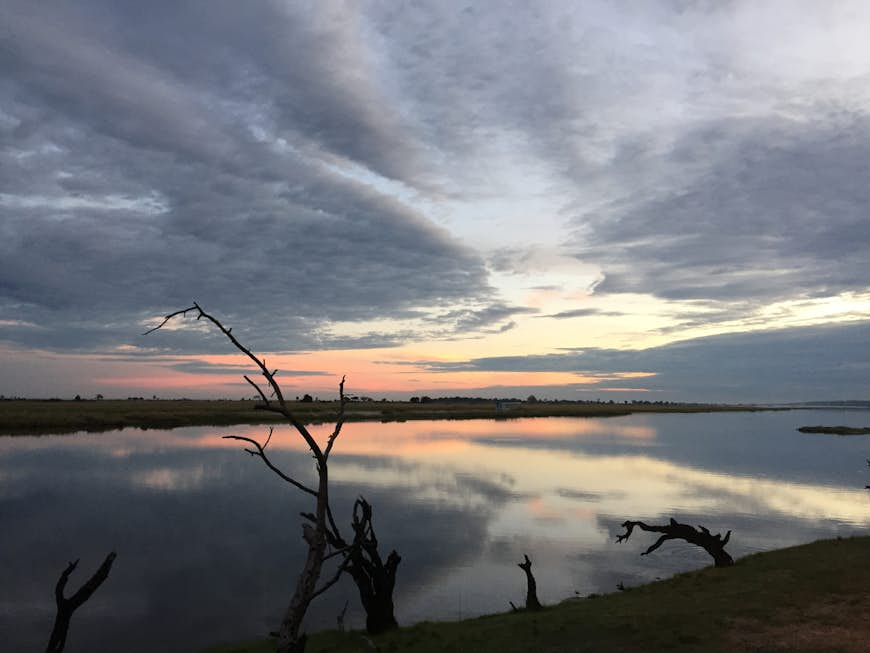The aquatic environment and permanent blue skies allow you to enjoy the most quintessential Okavango experience – being poled through the myriad reed-lined channels in a mokoro (traditional dugout canoe). Without a sound other than the symphony played by nature, and with your eyes almost at water level, you’re truly immersed in the environment. We spotted the world’s smallest frog grasping to a single reed, and gazed up to a blue sky flecked with the pink of soaring flamingos. High water also enables the use of modern watercraft, so you can venture further into the delta to reach exciting Big Five sightings in a powerboat.







